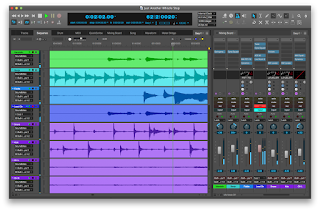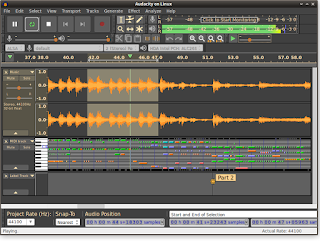Hello and welcome to this week's article!
Today we say farewell to this 2017 with a double review: a bass amp and a bass preamp-multi effect, thanking our friend Zoltan for the precious collaboration.
Let's start with the amp: Markbass Little Mark 250 Black line.
Markbass is an italian company famous all around the world for its great bass amplifiers, and the Little Mark 250 is one of the smallest and most affordable, yet usable in a rehearsal's room.
Weighing only 2kgs, this super compact head has a 6 knobs eq (low, low mid, high mid, high, variable pre-shape filter and vintage loudspeaker emulator - this last one works for the line out signal) which can be put before of after the preamp, gain, inputs and outputs also in xrl and a speaker emulated out: basically a more than complete setup for a bass amp.
What surprised me is how loud this unit is: in a world in which bass amps can reach crazy power outputs (like 2000watts) we use this in a rehearsal's room playing heavy metal with drums, guitar etc and half of the volume is more than enough to stay on top of a very loud drummer, so 250w are definitely enough for a rehearsal room, considering also that in a live situation 99% of the times the direct signal will go straight from the head to the mixing board, so the wattage is not a problem anyway.
My final verdict is that this small head, for its price, it's the best bang for the buck on the market, and the quality, in this price range, is way higher than its direct competitors.
Nice job Markbass!
Specs taken from the website:
- GAIN: -60 dB to +23 dB range
- GROUND LIFT (switch on rear panel)
- 6 KNOBS EQ
- EFFECT SEND: unbalanced, max. voltage 20 Vpp (pre-EQ)
- TUNER OUT: unbalanced, max. voltage 2 Vpp
- SPEAKER OUT: speakon/1/4" combo, 1/4"
As you can also see from the video, together with the Markbass head we have played a bit with the Tech21 Bass Fly Rig.
This is an extremely compact and simple pedalboard made by Tech21, the american company that created Sansamp, one of the first and most famous amp modeling preamps (all analog), still used today (especially in its bass version) by basically all the world's biggest stars.
This bass fly rig incorporates a bass Sansamp, which can be used both with an amp or to go straight to the mixer, an Octave, a Fuzz, a Boost (that can be set pre or post the Sansamp section), a Chorus, a Compressor and a Tuner.
It really improves the sound, cleaning it up and making it sound less muddy, more aggressive and deep, without giving it that mosquito-like gain that sometimes digital processors give to the instrument: this is probably one of the perks of the analog processing.
This small unit is really a swiss army knife for the traveling musician, it lets you have a good tone anywhere you plug it and it is very credible also when used directly on the mixing board.
Thumbs up!
Specs taken from the website:
- Sansamp
- Fuzz
- Octave
- Chorus
- Compressor
- Boost
- Tuner
- Xlr out
- Speaker emulated out
Happy new year from Guitar Nerding Blog!
Become fan of this blog on Facebook! Share it and contact us to collaborate!!












